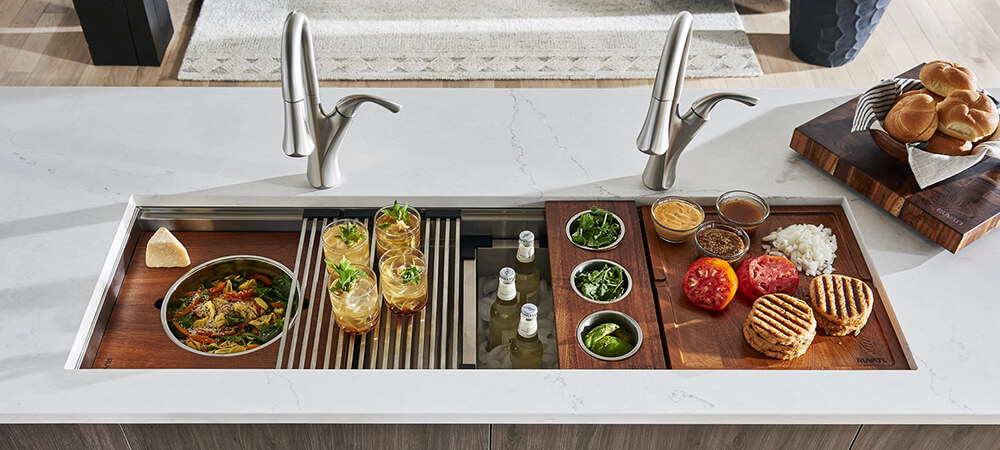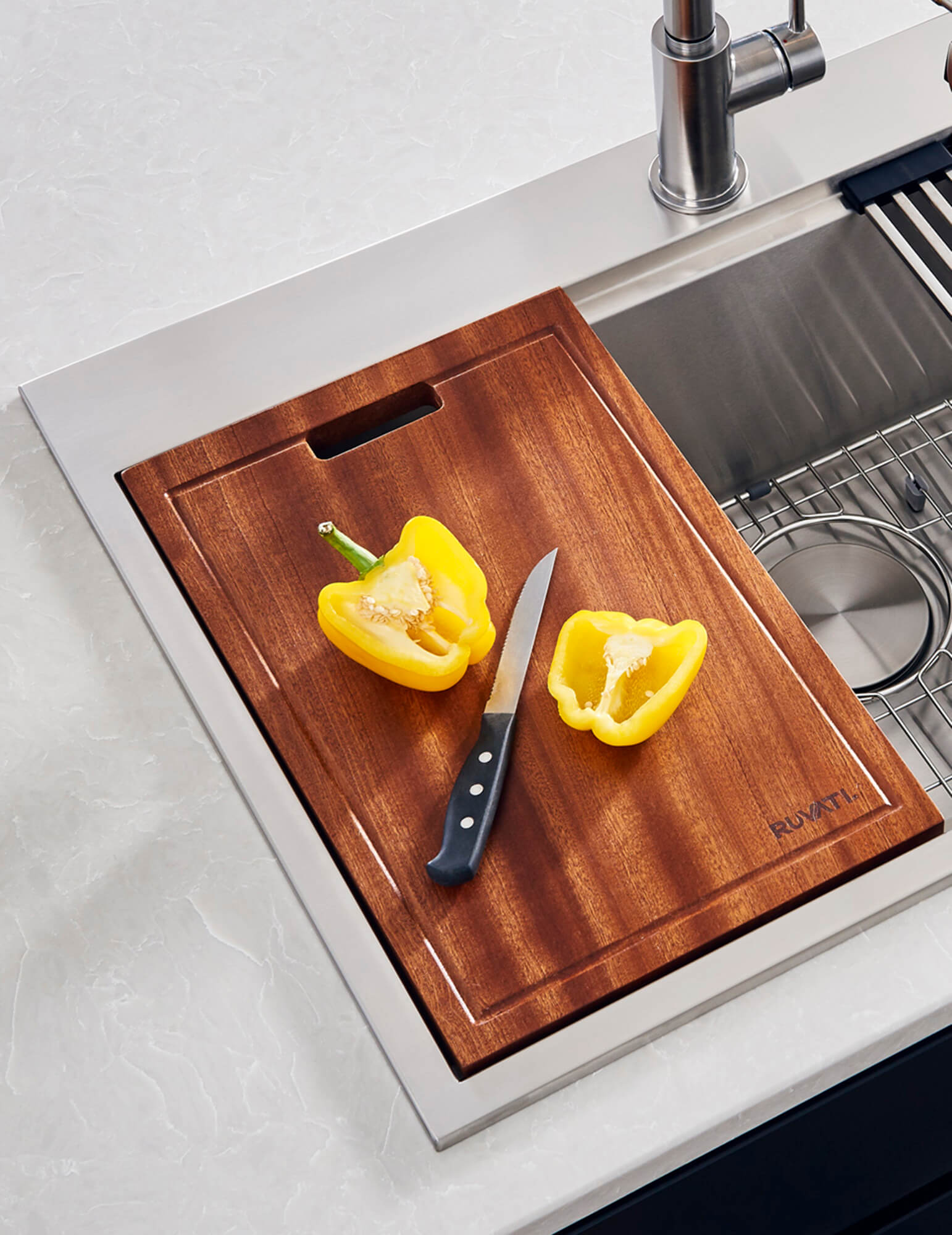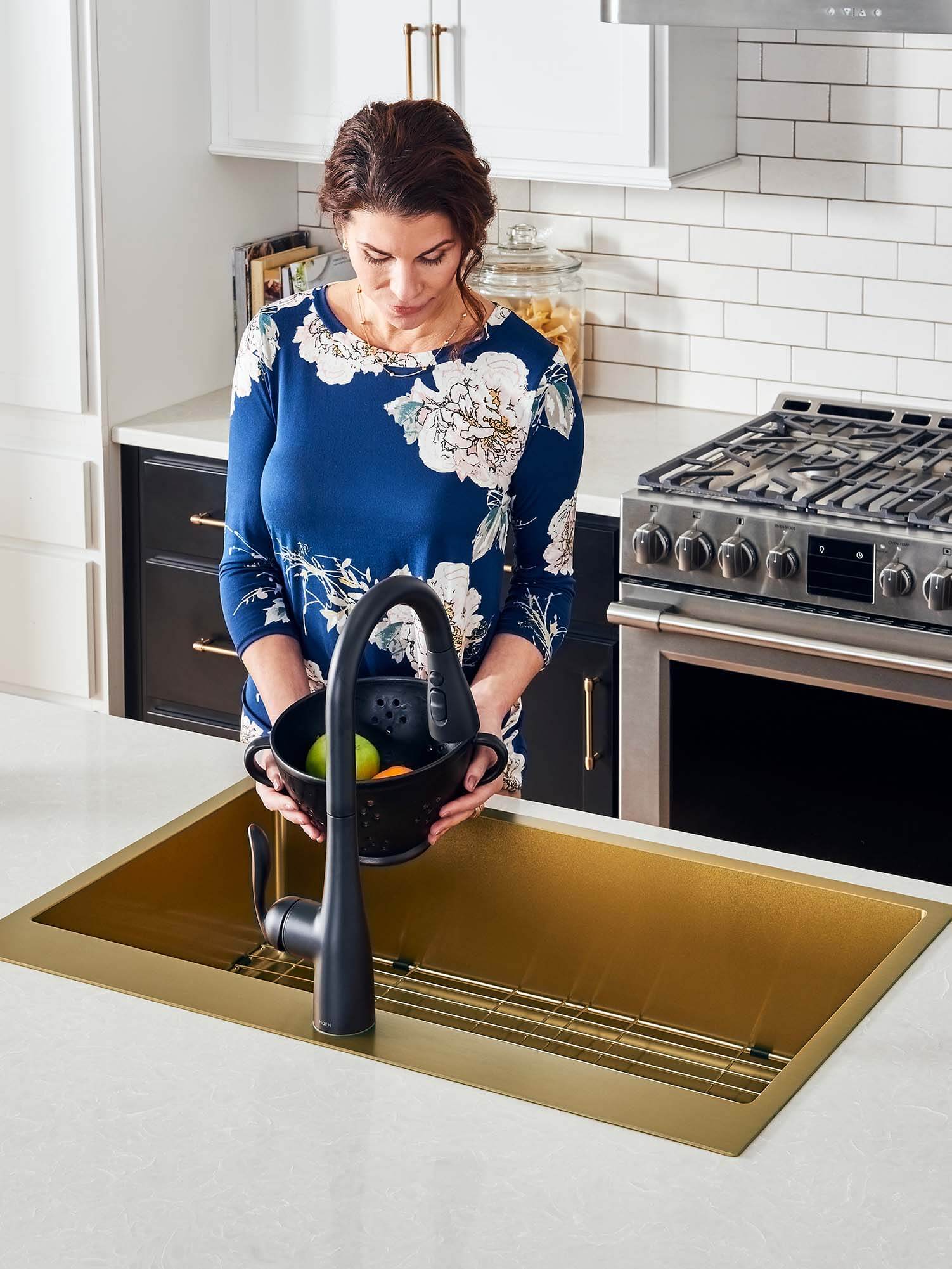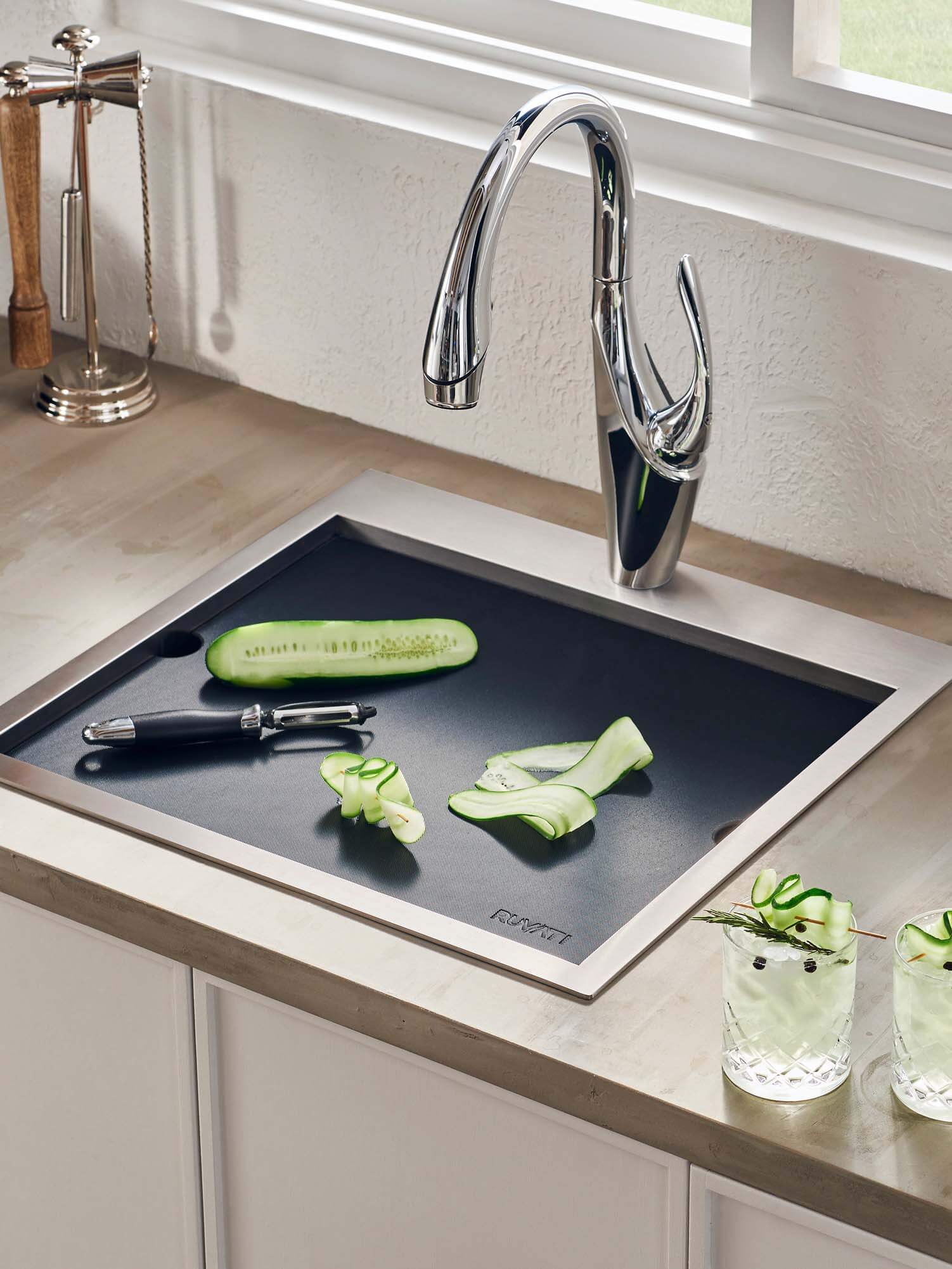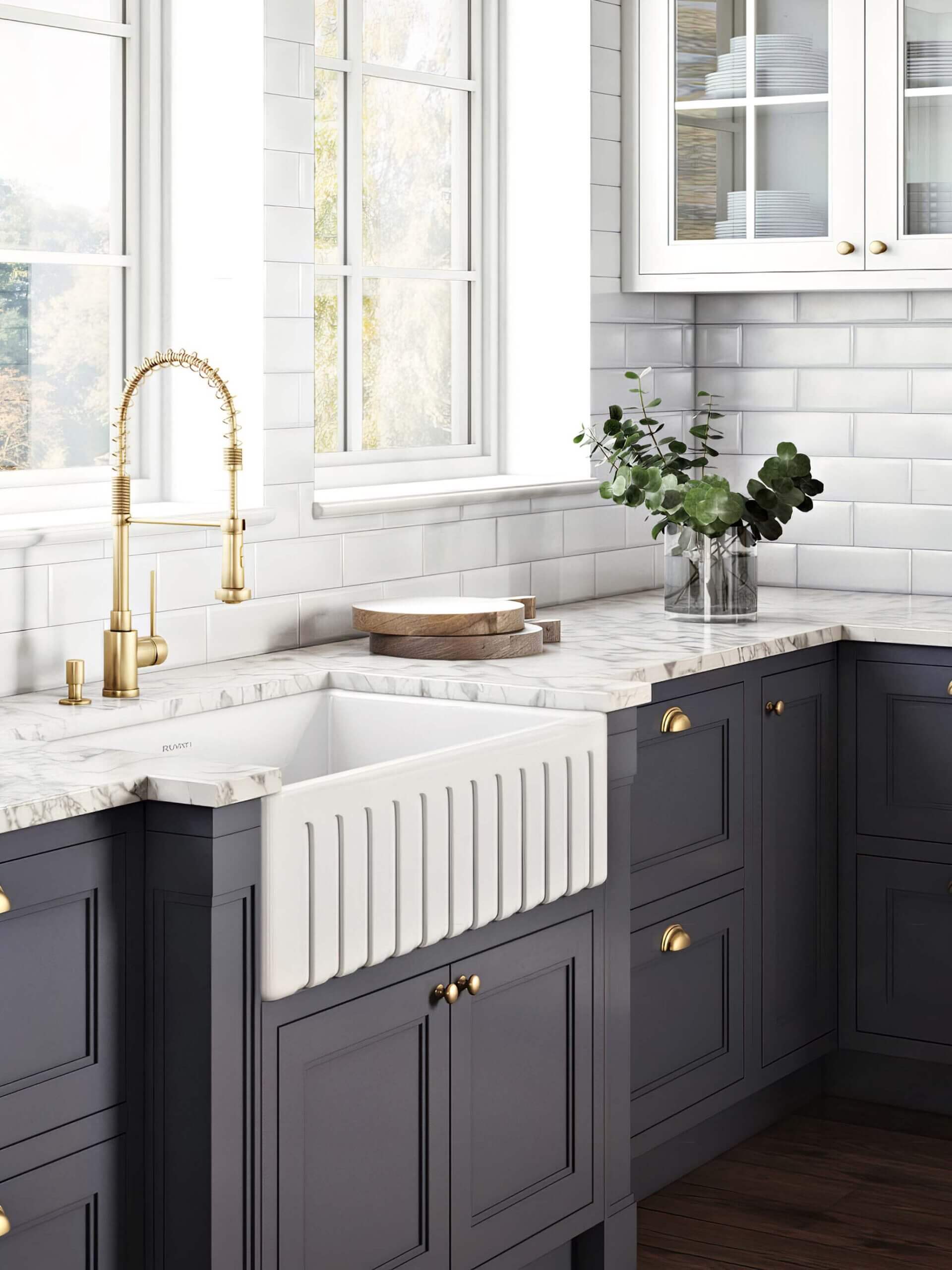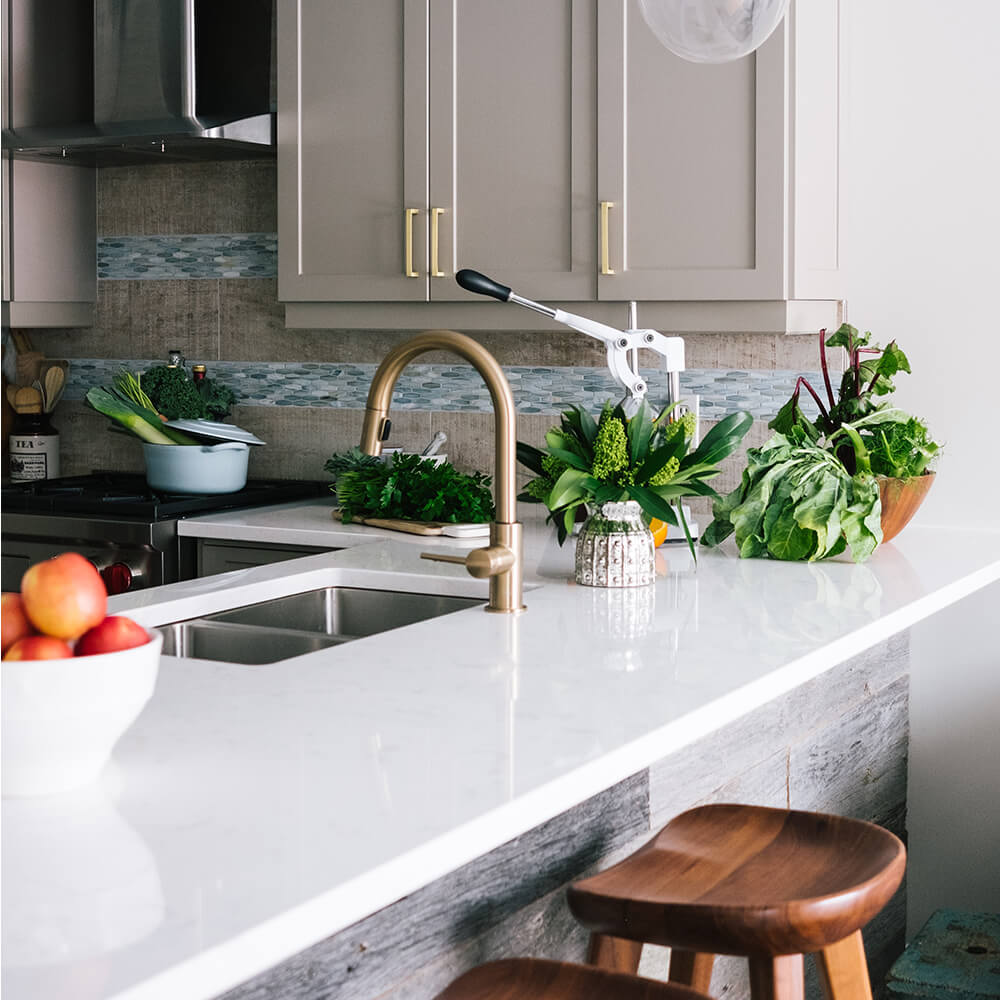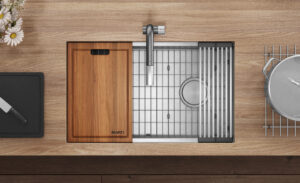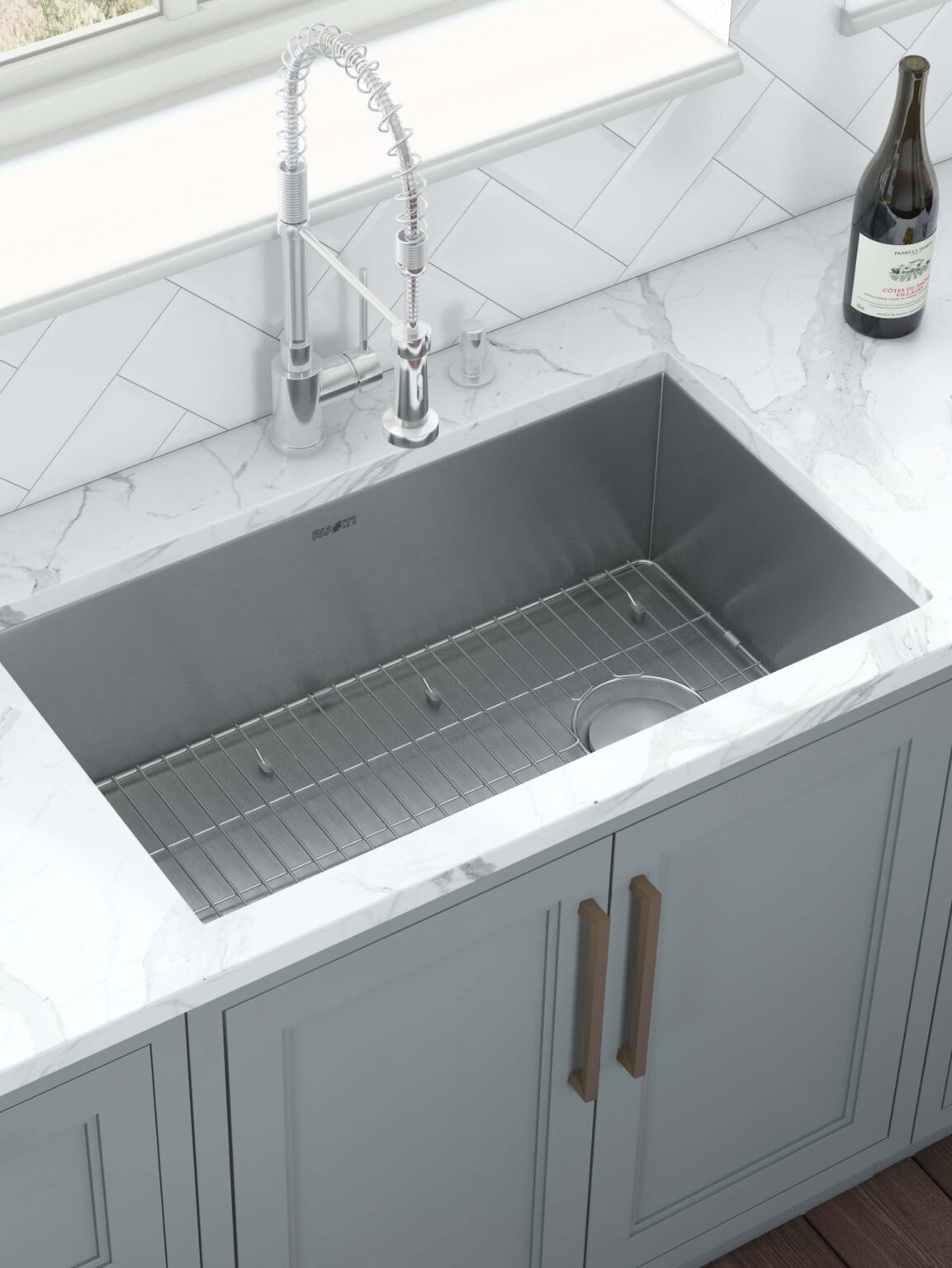Chopping vegetables, slicing meat, mincing herbs, and so much more. We know your cutting board is an integral asset to your kitchen and sees a lot of wear and tear. But, have you ever considered which type of cutting board is best for you: either wood or plastic? Perhaps both? After all, they are each very distinct with particular use cases. Needless to say, we’ve never come across anyone with a strong personal preference. Both options have loyal followers, each championing their choice based on hygiene, durability, and impact on knife edges. As we explore the benefits and drawbacks of these two popular materials, you’ll soon discover that the ‘right’ choice isn’t always clear-cut. Let’s peel back the layers and get to the heart of the matter.
Key Takeaways
- Wood is durable, gentle on knives, and has natural antimicrobial properties.
- Plastic is lightweight, easy to clean, and less expensive.
- Wood requires more maintenance and is heavier than plastic boards.
- Plastic can develop deep scratches and wear down knives faster.
Plastic and Wood: Unique Material Properties
When considering the unique material properties of wood vs plastic, it’s crucial to examine their durability, ecological impact, health implications, individuality, and aging characteristics. In terms of durability and longevity, wood boards outperform plastic. Wooden cutting boards are resilient, not easily scratched or damaged, and hold their value over time. Meanwhile, plastic boards can warp, break, melt, and chip, necessitating more frequent replacements.
Ecologically, wood is far superior. The production of wood products leaves a smaller carbon footprint compared to the manufacturing of plastic. Additionally, wood is a renewable resource, absorbing carbon dioxide and providing clean air, while plastic production releases harmful chemical compounds into the environment. Health-wise, wood offers a significant advantage, as it doesn’t contain BPA, a synthetic compound found in most plastics linked to various health conditions. Therefore, choosing a wood cutting board over a plastic one can be healthier.
The individuality of plastic and wood cutting boards is another factor to consider. Each wooden board is unique, thanks to the natural variations in wood grain, offering a sense of individuality and uniqueness. In contrast, plastic boards lack this individuality, as they’re mass-produced to exact specifications. Lastly, consider the aging characteristics. Wood ages gracefully, developing a lovely patina over time, while plastic tends to deteriorate, both visually and structurally. Therefore, a plastic or wood cutting board isn’t just about functionality but also the aesthetic and tactile experience it offers in your kitchen.
Pros and Cons: Glass or Stone vs Plastic vs Wooden Cutting Board
When choosing between a plastic and wooden cutting board, you’ll find both have their strengths and weaknesses. Wooden boards are generally more durable and gentle on knives but require more upkeep; plastic is easier to clean and less expensive but can wear down your knives quickly. As for glass or stone, well, we’ll get to that a bit later. It’s essential to weigh these pros and cons to select the right board for your kitchen needs.

Use Case | Wood | Plastic (HDPE) | Glass or Stone |
|---|---|---|---|
| Best For | A medium-duty, all-purpose surface for slicing cooked meats, fruits, vegetables, baked goods, and more. | A heavy-duty surface for handling raw meats, fish, poultry, and cleavers. | A light-duty board, not meant for preparation. Treat it like a cheese board. It is meant for presentation only. |
| Benefits |
|
|
|
| Drawbacks |
|
|
|
Glass or Stone Cutting Boards: Cons, Cons, and Cons
Despite their hygienic properties and ease of maintenance, cutting boards made from glass or stone have drawbacks you’ll want to consider. This cutting board may appear sleek and modern in your kitchen. Still, there are better choices for food preparation. The hardness of these surfaces can be detrimental to your knives. This material doesn’t give way like plastic or wood, causing your blades to dull faster. This leads to extra expenses in knife sharpening or replacement, making chopping less efficient and potentially more dangerous.
Another issue with using these types of boards is their slippery surface. Food can easily slide around, making your chopping tasks more difficult and increasing the risk of accidents. This type of cutting surface is not recommended if you value precision in your culinary tasks. Moreover, they are notorious for being noisy. Each time your knife strikes the board, it creates a loud, high-pitched sound. This can be pretty annoying, especially if you’re preparing a large meal and doing a lot of chopping.
Lastly, while these boards are resistant to bacteria growth due to their impermeable nature, they can shatter or chip if dropped or exposed to extreme temperature changes. Innovation in the kitchen is often welcome, but in the case of stone or glass cutting boards, the cons may outweigh the pros. It’s important to consider not just the aesthetic appeal but also the functionality and longevity of your kitchen tools.
Choose the Right Cutting Board for Specific Tasks
Regarding task-specific cutting boards, your choice can make a big difference. A plastic surface is best for raw meats, fish, and poultry because it is easy to clean and sanitize. However, a wooden board is perfect for slicing cooked meats, fruits, vegetables, and baked goods, thanks to its durability, knife-friendliness, and aesthetic appeal.
Plastic Cutting Boards by Ruvati
Choosing the right cutting board for specific tasks can significantly enhance your cooking experience, ensuring both safety and efficiency in your kitchen. Among these, the Ruvati 11 x 17-inch Matte Black Composite Cutting Board stands out. Designed explicitly for Ruvati workstation sinks, this board is made from durable, food-grade high-density polyethylene and is reinforced with wood fiber, offering superior durability and resilience against knife impacts. It’s dishwasher safe and BPA-free, and its solid composite material is colored throughout to resist discoloration and scratches, making it a hygienic choice. The dual-sided design, featuring a flat side and a side with drain grooves, adds to its versatility. Its size and non-porous nature make it perfect for quick tasks, and it doesn’t harbor bacteria. However, like all cutting boards, replacing it at the end of its life is essential. Overall, the Ruvati cutting board is an innovative, practical, and safe choice for a high-paced, modern kitchen.
Wood Cutting Boards by Ruvati
While our HDPE cutting board is a great option, the Ruvati 11 x 17-inch solid wood cutting board brings timeless appeal and functionality to your kitchen. Crafted from durable sapele wood, known for its resistance to water and scratches, this board is renowned for its longevity, complementing the existing durability of wooden boards. Its surface, treated with food-safe vegetable tannin and mineral oil, is gentle on knives, reducing damage risk. This dual-purpose board blends seamlessly into your kitchen decor, doubling as a stylish serving platter. The unique design with a flat and grooved side enhances its functionality, especially for Ruvati workstation sinks. Regularly applying mineral oil to prevent the board from drying out and cracking is a must. If scratched, sand it out and reapply oil, ensuring your board remains as good as new.
Wood or Plastic Cutting Board: Ruvati’s Recommendation
In the debate between wood and plastic cutting boards, we highly recommends considering both for different uses for food safety. Wood cutting boards, for instance, are highly recommended for preparing fresh produce and ready-to-eat foods. They have natural antimicrobial properties that can inhibit food-borne bacterial growth. However, boards made from a species of hardwood like maple require careful maintenance. Regular oiling can extend their lifespan and prevent bacteria from harboring in the deeper marks.
On the other hand, separate cutting boards are recommended when handling meats. As mentioned before, plastic is the better choice in this matter. They are more sanitary, as they are less porous, thus reducing the risk of cross-contamination. They are more resistant to knife marks, but these boards develop grooves over time, which can harbor pathogens. Therefore, they need to be replaced when heavily worn or have deep grooves.
Whether you go for one or the other, cleaning and sanitizing them after each use is essential. For plastic, a scrub brush can be used to remove residue or grooves, and they can be sanitized with a diluted bleach solution or hydrogen peroxide. Wooden boards, meanwhile, can be sanitized with vinegar or hydrogen peroxide solution but must avoid soaking to prevent warping or cracking. For more detailed information on caring for your wood-cutting board, check out this helpful article.
Frequently Asked Questions
What Are the Pros and Cons of Using Bamboo as a Cutting Board Material?
Bamboo is a sustainable, rigid material ideal for cutting boards. And a cheaper alternative compared to hardwood. It’s less porous, minimizing bacteria growth. However, it’s tough on knives, dulling them quickly. Also, it requires regular oiling to prevent splitting and warping. For an in-depth comparison of bamboo vs wood cutting boards, find more here.
How Does the Hardness of the Wood Used in a Cutting Board Impact Its Performance and Durability?
Harder woods make durable, long-lasting cutting boards. They’re less prone to knife marks, reducing bacterial growth. However, they can dull knives quicker. So, consider your knife’s longevity and the board’s maintenance when choosing your cutting board.
How Often Should I Replace My Plastic Cutting Board?
You should replace your plastic cutting board once deep cuts start appearing. These grooves can harbor bacteria, making it harder to clean thoroughly. Usually, a well-used plastic board lasts about a year.
Can I Use a Wooden Cutting Board for Meats if I Sanitize It Properly?
You can absolutely use a wood butcher block for meats if you sanitize it properly. Wood’s natural antimicrobial properties and thorough cleaning can keep it safe for meat preparation like raw chicken and prevent salmonella.
What Are Some Eco-Friendly Alternatives to Plastic Cutting Boards?
Wooden and plastic cutting boards are as eco-friendly as you can get. They’re renewable, biodegradable, and recyclable. These cutting boards are also inexpensive long term compared to cork boards.
Final Thoughts
Choosing a cutting board depends on your cooking habits and preferences. Whether you prefer wooden ones for their natural charm and durability or plastic’s easy maintenance and affordability, each has unique benefits. Always remember to prioritize food safety and cleanliness, regardless of the board you choose. With the proper care, either option could serve you well in your culinary endeavors. Happy cooking!
